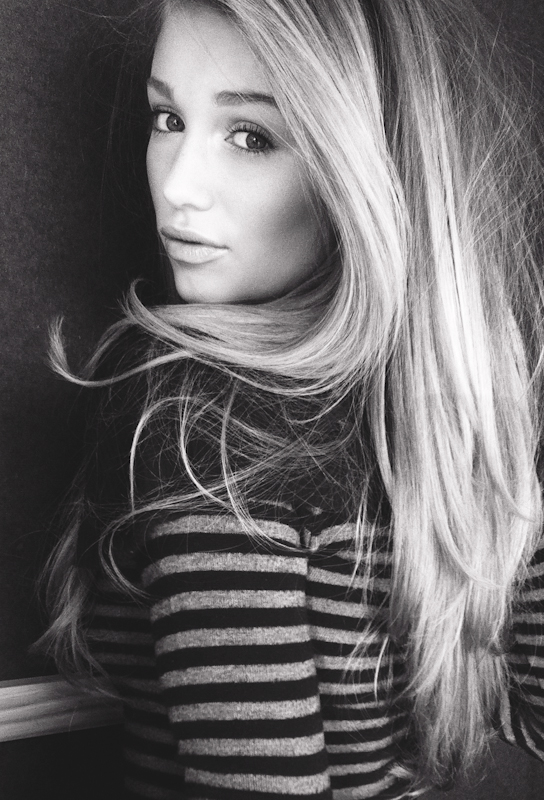
Cailin with the iPhone4
I wonder if most of us would benefit from the experience of shooting on cameras with less dynamic range.
It occurred to me the other day when I was examining files from both the Canon 7D and the Nikon D3 that digital imaging technology has come a long way. Yet with all the improvements in technology, our photography does not necessarily improve. And certainly not at the same pace as technological advances.
And for the most part many of us rely on the crutches of technology to get away with poor lighting/photography. Using myself as an example, if the D3 were only capable of 6 stops of dynamic range, I'd be forced to fill light some of my high-contrast light setups in order to preserve shadow detail. But I don't because I don't have to. I can pull those details out with Adobe Camera Raw.
Lucky me.
For example, with only 6 stops of dynamic range, I wouldn't be able to shoot directly into the sun (with the model facing me) without blowing out the background completely. I'd have to reflect or fill some light onto the subject to balance out the exposure discrepancy between ambient and direct sunlight. And when bouncing sunlight, I'd be forced to decide how what angles I want to reflect that light. I can't be bouncing light from beneath the model. After all that's going to be my main light. Think about it. The sun is behind the model. Once you hold that reflector to fill in the model, that's your main light. And you don't want your main light to be coming from the ground.
But lucky me, the sensor is so awesome that I don't have to think about bounce/fill. Just adjust with ACR.
A crutch afforded by technological advancement.
Of course I love the fact that the sensors capture roughly 12 stops of dynamic range. I wish they'd capture more. Of course I realize that lots of what we do isn't possible without this technology. My point is simply that we get lazy with technology doing so much work for us. Sometimes to the point where we never learn the proper techniques and theory in the first place.
And that's where budding photographers run into problems.
The technology can become a crutch. And like a crutch, you become dependent on it. But one day your camera is going to break during a shoot. And you don't have a backup. Fortunately what you do have is an camera phone with a piddly little sensor that's only capable of 6 stops of dynamic range (okay that's an exaggeration but the shadow detail is ugly). Without good understanding of balanced exposure and lighting, how are you going to save that shoot with your camera phone? You won't. You can't. Because all along you've been walking with a crutch. Do you expect not to limp when the crutch is gone? Your leg muscles aren't adapted and the synapses to your brain aren't acclimated to walking without a crutch. So you hobble along, poorly.
Even if you don't agree. I think it's a good experiment to try shooting with your camera phone. You'd be surprised how many technological crutches you rely on regularly. All of your flaws will be exposed and amplified by that camera phone. Motion blur, white balance ugliness, JPEG's 8-bits of depth, rate of capture, lack of dynamic range, no ACR adjustments, the list goes on and on :)
But if you can shoot a camera phone, you can shoot any camera. The same philosophy applies to understanding lighting. If you can effectively light your model well with only ambient light and whatever it offers (bounce, fill, direct, etc.) then you truly understand light and you can light in any environment. With or without strobes. You'll never fear light and worry about not being able to conquer random locations.
Even if you don't agree. I think it's a good experiment to try shooting with your camera phone. You'd be surprised how many technological crutches you rely on regularly. All of your flaws will be exposed and amplified by that camera phone. Motion blur, white balance ugliness, JPEG's 8-bits of depth, rate of capture, lack of dynamic range, no ACR adjustments, the list goes on and on :)
But if you can shoot a camera phone, you can shoot any camera. The same philosophy applies to understanding lighting. If you can effectively light your model well with only ambient light and whatever it offers (bounce, fill, direct, etc.) then you truly understand light and you can light in any environment. With or without strobes. You'll never fear light and worry about not being able to conquer random locations.
Looking forward to my next iPhone shoot!

No comments:
Post a Comment